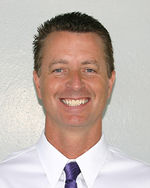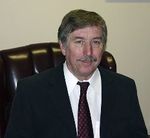Difference between revisions of "SCU WIKI:Contributors"
Paulwanlass (Talk | contribs) |
Paulwanlass (Talk | contribs) (→Dr. Paul Wanlass, DC, CSCS, CSPN) |
||
| Line 23: | Line 23: | ||
| valign="top" rowspan="4" width="100%" | | | valign="top" rowspan="4" width="100%" | | ||
{| style="border:none; cellpadding:0; cellspacing:0;" | {| style="border:none; cellpadding:0; cellspacing:0;" | ||
| − | | Bio: Dr. Wanlass graduated Magna Cum Laude from SCU in 1999, and have been in private practice in California and Nevada. I was on the Dean’s list for all 10 terms, a member of the Delta Sigma Honorary Scholastic Society, awarded the honor of being included in the 2000 edition of “Who’s Who in American Colleges and Universities”, and scored in the 94th percentile on both the Chiropractic National Board Exams, and the Nevada State Chiropractic Physicians’ Board Exam. I am a full time Professor at SCUHS. In 2000 I became a Certified Strength and Conditioning Specialist (C.S.C.S.), one of only 300 worldwide that is both a C.S.C.S. and a Doctor of Chiropractic. In 1999, I became a Certified Specialist in Performance Nutrition (C.S.P.N.). | + | | Bio: Dr. Wanlass graduated Magna Cum Laude from SCU in 1999, and have been in private practice in California and Nevada. I was on the Dean’s list for all 10 terms, a member of the Delta Sigma Honorary Scholastic Society, awarded the honor of being included in the 2000 edition of “Who’s Who in American Colleges and Universities”, and scored in the 94th percentile on both the Chiropractic National Board Exams, and the Nevada State Chiropractic Physicians’ Board Exam. I am a full time Professor at SCUHS. In 2000 I became a Certified Strength and Conditioning Specialist (C.S.C.S.), one of only 300 worldwide that is both a C.S.C.S. and a Doctor of Chiropractic. In 1999, I became a Certified Specialist in Performance Nutrition (C.S.P.N.). [http://www.lulu.com/spotlight/MyFitnessBooks He has authored several books on Strength Training and Sports Nutrition.] |
I was on the medical team for the World Shotokan Karate Championships in 1997 in Riverside, CA. I have treated professional and gold medal athletes, fire, police, military, and special forces personnel, in both California and Nevada. I was an E.M.T. for 4 years, and I have been Certified in CPR and BLS since 1989. | I was on the medical team for the World Shotokan Karate Championships in 1997 in Riverside, CA. I have treated professional and gold medal athletes, fire, police, military, and special forces personnel, in both California and Nevada. I was an E.M.T. for 4 years, and I have been Certified in CPR and BLS since 1989. | ||
Revision as of 19:52, 23 December 2012
Contents
Contributor Profile
Dr. Mike Sackett, DC, MS, DABCO
Dr. Paul Wanlass, DC, CSCS, CSPN

|
| |
| SCU WiKi Admin | ||
| Email: PaulWanlass@scuhs.edu | ||
Dr. Thomas Bodette, DC, CCSP

|
| |
| Thomas Bodette | ||
| SCU WiKi Contributor |
Dr. Felix Lee, DC, CCSP

|
| |
| Felix Lee | ||
| SCU WiKi Contributor |
Dr. Jeremy Summers, DC, MAOM

|
| |
| Dr. Summers | ||
| SCU WiKi Contributor |
Dr. David Sikorski, DC

|
| |
| David Sikorski | ||
| SCU WiKi Contributor |
Dr. Beth Dominicis, DC

|
| |
| Beth Dominicis | ||
| SCU WiKi Contributor |
